
- Software
- DIGITAL SYSTEM
- Digital interfaces
- RME/Digiface AVB オーディオインターフェイス
RME / Digiface AVB オーディオインターフェイス
Variations
256ch 192kHZ USB audio interface.
■ Audio interface
■ USB3.0
■ AVB
RME's new standard for network audio
Digiface AVB supports audio network technology "AVB", which is attracting attention for its high convenience and expandability, handles up to 256 channels of audio data, and bridges the computer and AVB network.
USB 3.0 is used for connection with a computer, and while maintaining low latency and stability due to RME's driver technology, it is possible to transfer and receive signals of up to 128 channels at a sampling frequency of 192 kHz to AVB network. You can also manage channel streams in units of 2 to 32 channels.
A compact audio interface that can be freely mixed and routed using TotalMix FX and AVDE CC controller software. It also supports the protocol "MILAN" that guarantees compatibility between AVB devices and their management.
Digiface AVB is a mobile AVB audio interface that provides high quality headphone monitoring with headphone output in a small housing, and manages audio data transmission using AVB protocol stack for Mac and Windows. This product is compatible with both computers.
■ Main features
・48 kHz 24 bit 128 channel recording/playback, 128 channel I/O
・96 kHz 24bit 64 channel recording/playback, 128 channel I/O
192 kHz 24bit 32 channel recording/playback, 60 channel I/O
・Buffer size/latency setting: selectable from 32 to 8192 samples
・Equipped with 100 Mbit/s compatible Gigabit Ethernet port
・Transmission network latency can be set: 0.3125 ms to 2 ms
・Clock mode: slave, master
・TotalMix: latency-free submix and perfect ASIO direct monitoring
・TotalMix: Internal processing 46-bit 4096 channel mixer
・Independent analog/line headphone output with submix output
・DIGICheck DSP: Hardware-based level meter, Peak/RMS measurement
・USB error analysis
・High compatibility with existing AVB devices: MILAN compatible
・IEEE 802.1 BA compliant AVB stack
・IEEE 1722 AVTP/1722.1 AVDE CC compliant
AVB's superiority
"AVB" (Audio Video Bridging) is a "standard for transmitting video and music via Ethernet" established by the IEEE (Institute of Electrical and Electronics Engineers), and is expected for its high convenience and expandability. Audio network technology.
AVB and MILAN devices (including switches) share extremely accurate time information over the IEEE 802 network by using a subset of the PTP standard called generalized precision time protocol (gPTP).
This allows the transmitting device to specify when each audio sample should be played at the receiving end. Since the time offset is added to each sample and transmitted at the time of transmission, the receiving side can grasp the final sounding timing and sound based on the received nanosecond-precision time stamp. This realizes network transmission with extremely high accuracy and low latency.
*For details, please refer to AVB details.
MILAN compatible
MILAN is a protocol that guarantees interoperability at both the device media and device management layers. MILAN products are also AVB products, but not all AVB products are MILAN products. To be implemented, it needs to be checked/adjusted to meet the stringent requirements of MILAN.
Upon implementing MILAN, RME has updated existing AVB products and added necessary functions. For example, support for the high efficiency 32-bit AAF audio format in an 8-channel stream. As for the switch, you can use it with MILAN if it is an AVB compatible product.
MILAN guarantees compatibility between different AVB devices, allowing simple setup between compatible devices.
■ Bundled items
USB 3.0 cable, cable auxiliary hook, rubber feet, Digiface AVB setup guide, Digiface AVB Japanese user guide, DIGICheck Japanese user guide
■ Technical specifications
Gigabit Ethernet port
RJ45
100 Mbit/s, 1 Gbit/s
Standard port LED: connection (yellow), data transmission (green)
Supports straight and crossover cables (Auto MDI-X)
Up to 16 AVB audio streams
AVDECC conversion of status and control data
Remote control via network (TotalMix Remote)
Word clock input
BNC, no termination (10kΩ)
75Ω internal termination function
Double/Quad speed automatic detection/Single speed conversion
Word clock output
BNC
Maximum level: 5 Vss
75Ω termination level: 4.0 Vss
Internal impedance: 10Ω
Analog Phones output 33/34
Dynamic Range (DR): 110 dB RMS unweighted, 113 dBA
Frequency characteristics @ 44.1 kHz, -0.5 dB: 0 Hz to 20.8 kHz
Frequency response @ 96 kHz, -0.5 dB: 0 Hz to 45 kHz
Frequency response @ 192 kHz, -1 dB: 0 Hz-89 kHz
THD @ -1 dBFS:-96 dB, 0.0016%
THD+N @ -1 dBFS: -95 dB, 0.0017%
Channel separation: 100 dB or more
Output: 6.3 mm TS terminal, unbalanced
Output impedance: 2Ω
Output level (0 dBFS, 1 kΩ load): +9.5 dBu
Maximum power @ 0.1% THD: 50 mW
Digital
Clock: Internal, AVB, word clock
Supported sampling rates: 44.1 kHz to 192 kHz
General
Power adapter USB bus power
Idle power consumption: 1.5 watts
Power when operating on 5 V bus power: 300 mA
Maximum idle power consumption: 2 watts (400 mA)
Dimensions (WxHxD): 112 x 26 x 83 mm
Weight: 300 g
Operating temperature: +5° ~ +50°C
Relative humidity: 75% or less, non-condensing
■ Operating environment
Windows 7/macOS Sierra or later ・USB 2.0 or 3.0 port x 1・Computer with Intel Core i3 or higher CPU Windows 7/macOS Sierra or higher
USB 2.0 or 3.0 port x 1
Computer with Intel Core i3 or higher CPU
*To build an AVB network, a switching hub compatible with AVB is required.
■ USB3.0
■ AVB
RME's new standard for network audio
Digiface AVB supports audio network technology "AVB", which is attracting attention for its high convenience and expandability, handles up to 256 channels of audio data, and bridges the computer and AVB network.
USB 3.0 is used for connection with a computer, and while maintaining low latency and stability due to RME's driver technology, it is possible to transfer and receive signals of up to 128 channels at a sampling frequency of 192 kHz to AVB network. You can also manage channel streams in units of 2 to 32 channels.
A compact audio interface that can be freely mixed and routed using TotalMix FX and AVDE CC controller software. It also supports the protocol "MILAN" that guarantees compatibility between AVB devices and their management.
Digiface AVB is a mobile AVB audio interface that provides high quality headphone monitoring with headphone output in a small housing, and manages audio data transmission using AVB protocol stack for Mac and Windows. This product is compatible with both computers.
■ Main features
・48 kHz 24 bit 128 channel recording/playback, 128 channel I/O
・96 kHz 24bit 64 channel recording/playback, 128 channel I/O
192 kHz 24bit 32 channel recording/playback, 60 channel I/O
・Buffer size/latency setting: selectable from 32 to 8192 samples
・Equipped with 100 Mbit/s compatible Gigabit Ethernet port
・Transmission network latency can be set: 0.3125 ms to 2 ms
・Clock mode: slave, master
・TotalMix: latency-free submix and perfect ASIO direct monitoring
・TotalMix: Internal processing 46-bit 4096 channel mixer
・Independent analog/line headphone output with submix output
・DIGICheck DSP: Hardware-based level meter, Peak/RMS measurement
・USB error analysis
・High compatibility with existing AVB devices: MILAN compatible
・IEEE 802.1 BA compliant AVB stack
・IEEE 1722 AVTP/1722.1 AVDE CC compliant
AVB's superiority
"AVB" (Audio Video Bridging) is a "standard for transmitting video and music via Ethernet" established by the IEEE (Institute of Electrical and Electronics Engineers), and is expected for its high convenience and expandability. Audio network technology.
AVB and MILAN devices (including switches) share extremely accurate time information over the IEEE 802 network by using a subset of the PTP standard called generalized precision time protocol (gPTP).
This allows the transmitting device to specify when each audio sample should be played at the receiving end. Since the time offset is added to each sample and transmitted at the time of transmission, the receiving side can grasp the final sounding timing and sound based on the received nanosecond-precision time stamp. This realizes network transmission with extremely high accuracy and low latency.
*For details, please refer to AVB details.
MILAN compatible
MILAN is a protocol that guarantees interoperability at both the device media and device management layers. MILAN products are also AVB products, but not all AVB products are MILAN products. To be implemented, it needs to be checked/adjusted to meet the stringent requirements of MILAN.
Upon implementing MILAN, RME has updated existing AVB products and added necessary functions. For example, support for the high efficiency 32-bit AAF audio format in an 8-channel stream. As for the switch, you can use it with MILAN if it is an AVB compatible product.
MILAN guarantees compatibility between different AVB devices, allowing simple setup between compatible devices.
■ Bundled items
USB 3.0 cable, cable auxiliary hook, rubber feet, Digiface AVB setup guide, Digiface AVB Japanese user guide, DIGICheck Japanese user guide
■ Technical specifications
Gigabit Ethernet port
RJ45
100 Mbit/s, 1 Gbit/s
Standard port LED: connection (yellow), data transmission (green)
Supports straight and crossover cables (Auto MDI-X)
Up to 16 AVB audio streams
AVDECC conversion of status and control data
Remote control via network (TotalMix Remote)
Word clock input
BNC, no termination (10kΩ)
75Ω internal termination function
Double/Quad speed automatic detection/Single speed conversion
Word clock output
BNC
Maximum level: 5 Vss
75Ω termination level: 4.0 Vss
Internal impedance: 10Ω
Analog Phones output 33/34
Dynamic Range (DR): 110 dB RMS unweighted, 113 dBA
Frequency characteristics @ 44.1 kHz, -0.5 dB: 0 Hz to 20.8 kHz
Frequency response @ 96 kHz, -0.5 dB: 0 Hz to 45 kHz
Frequency response @ 192 kHz, -1 dB: 0 Hz-89 kHz
THD @ -1 dBFS:-96 dB, 0.0016%
THD+N @ -1 dBFS: -95 dB, 0.0017%
Channel separation: 100 dB or more
Output: 6.3 mm TS terminal, unbalanced
Output impedance: 2Ω
Output level (0 dBFS, 1 kΩ load): +9.5 dBu
Maximum power @ 0.1% THD: 50 mW
Digital
Clock: Internal, AVB, word clock
Supported sampling rates: 44.1 kHz to 192 kHz
General
Power adapter USB bus power
Idle power consumption: 1.5 watts
Power when operating on 5 V bus power: 300 mA
Maximum idle power consumption: 2 watts (400 mA)
Dimensions (WxHxD): 112 x 26 x 83 mm
Weight: 300 g
Operating temperature: +5° ~ +50°C
Relative humidity: 75% or less, non-condensing
■ Operating environment
Windows 7/macOS Sierra or later ・USB 2.0 or 3.0 port x 1・Computer with Intel Core i3 or higher CPU Windows 7/macOS Sierra or higher
USB 2.0 or 3.0 port x 1
Computer with Intel Core i3 or higher CPU
*To build an AVB network, a switching hub compatible with AVB is required.
商品レビューProduct Review
不適切な投稿として報告しますか?
理由
ご協力ありがとうございました
投稿を削除しますか?
投稿されたレビューを削除しました。
RME
Digiface AVB オーディオインターフェイス
Item ID:272481
148,500 yen(incl. tax)
7,425Pt(5%)Detail
- 1,485Pts
通常ポイント
- 5,940Pts
ポイント5倍キャンペーン
- 7,425Pts
Total
- In Stock
- In Stock, can be shipped when order is confirmed.
- Low Stock
- Low Stock, may be sold out soon.
- Scheduled date
- Expected to arrive at Sound House on this date.
- TBA
- Expected date of arrival at Sound House to be determined.
- Back Order
- It needs to be orderd from the manufacturer. Please inquire about the estimated date of arrival.
- Mfr. Delivery
- Must be ordered from manufacturer. Please inquire about the estimated date of arrival.
- Download
- Only the serial number will be sent to your registered email address.
- Special Order
- Made to order item or must be ordered from manufacturer. May take several weeks or months.
- No Longer Available
- Product is no longer available due to having been discoutined or other reasons.

Rating




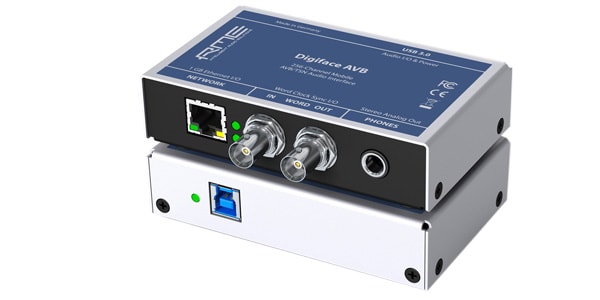


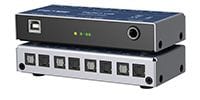
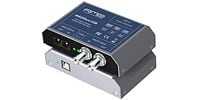
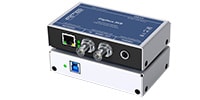
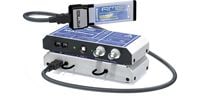




 Back Order
Back Order 
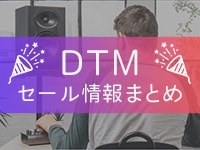



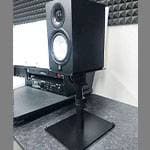







すべてのレビューを見る